#yorubaland
Text
King Oduduwa's 8th-century bce empire

King Oduduwa's 8th-century bce empire was not limited to Yorubaland but expanded across much of West Africa.
#King Oduduwa's 8th-century bce empire#Oduduwa#Yorubaland#Yoruba#Yoruba History#Africa#African History
5 notes
·
View notes
Text
Brief History of Iseyin, Nigeria’s Home of Aso-oke
Brief History of Iseyin, Nigeria’s Home of Aso-okeIseyin, a town in the country side of Oyo state, is an ancient city in Yoruba land which is rich in history, culture and tradition. This richness is evident in the socio-cultural relations displayed by the Iseyin natives, in the panegyrics used to describe it. Iseyin is approximately 100 km north of Ibadan and it is the fourth largest city in Oyo…
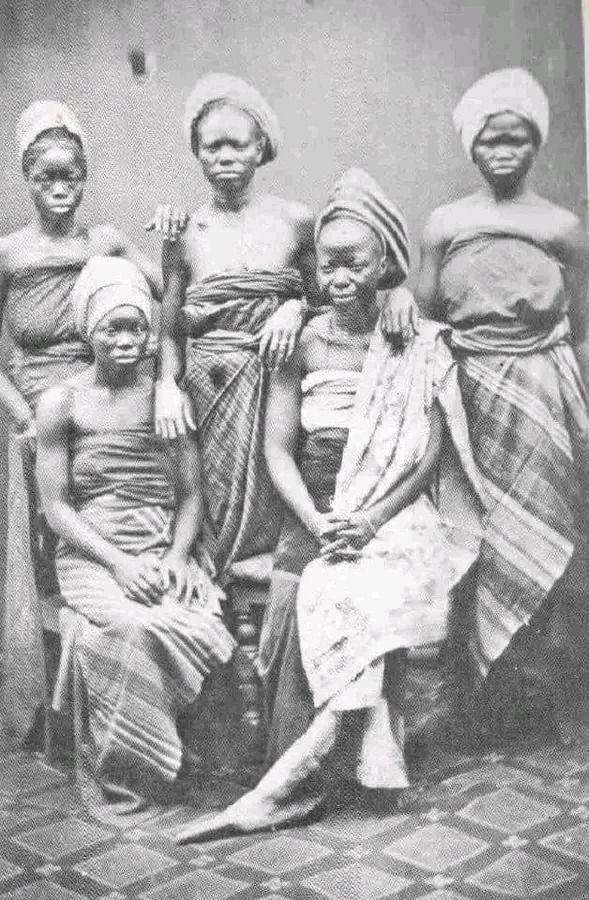
View On WordPress
#Alaafin#history of Iseyin#history of yoruba#Ife#ile ife#Iseyin#Oduduwa#oyo#Oyo empire#villagespec#Yoruba#Yorubaland
3 notes
·
View notes
Text

New Blog. African Medicine: Yoruba Spiritualty & Philosophy
“Traditional African medicine was, and is, effective in healing disease. Right diet, healthy lifestyle, and spiritualty are essential ingredients for recovery, whether in modern medicine of traditional healing. Root doctors provided the authority in our community in which such principles were grounded and preserved. This deep legacy continues to affect us.” – Dr. Tariq M. Sawandi, PhD, author of African Medicine: A Guide to Yoruba Divination and Herbal Medicine: A Complete Guide to Yoruba Healing Science and African Herbal Remedies
To find out more about the Yoruba (African) Spiritual and Philosophical practices before the Transatlantic slave trade, click here: https://rb.gy/pyq8ll
#yoruba#african#spirituality#philosophy#healing#lifestyle#medicine#principles#westafrica#eastaftrica#yorubaland#ife#egypt#nilevalley#culture#orunmila#prophet#ifa#gift#intution#teacher#priest#beforeslavery#ancestors#orishas#america
0 notes
Text
We have the capacity and are prepared and ready to defend ourselves against all external invaders- Ooni of Ife says Owo massacre was targeted at turning Yorubaland to a war zone
We have the capacity and are prepared and ready to defend ourselves against all external invaders- Ooni of Ife says Owo massacre was targeted at turning Yorubaland to a war zone
The Ooni of Ife, Oba Adeyeye Ogunwusi, has said that the massacre that took place in Owo, Ondo state on Sunday, June 5, was targeted at turning Yorubaland into a war zone.
Over fifty persons were killed after unknown gunmen stormed a Catholic church in Owo and opened fire on the parishioners.
In a statement released on Monday morning, June 6, the Yoruba monarch said no one should make the…
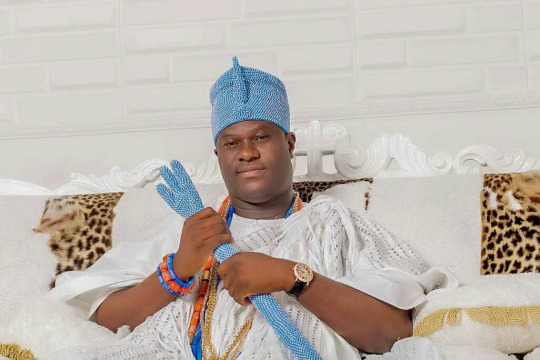
View On WordPress
0 notes
Photo
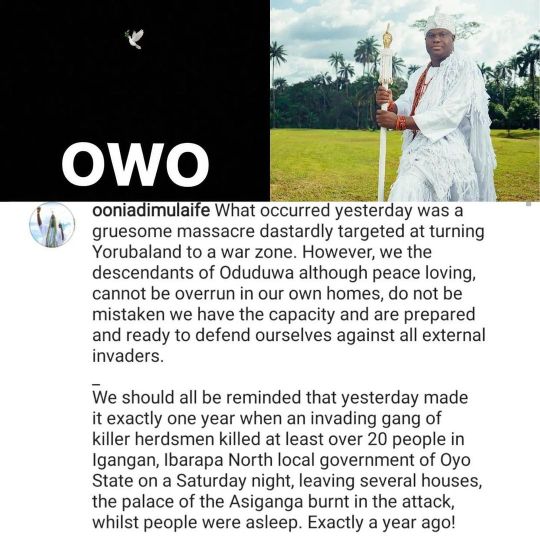
We have the capacity and are prepared and ready to defend ourselves against all external invaders- Ooni of Ife says Owo massacre was targeted at turning Yorubaland to a war zone. #ooniofife #yorubaland #nigeria #massacre #mycelebrityandi https://www.instagram.com/p/Ced6PVbo-KF/?igshid=NGJjMDIxMWI=
0 notes
Text
Nigeria’s Political And Religious Anomalies
Nigeria’s Political And Religious Anomalies
Let it be clear that politics ruined Nigeria by keeping together a useless union of unrelated humans beings. Let it be unambiguous that foreign, imported religions (Islams & Christianity) worked hand in hand with politics to sentence Nigerians to a permanent state of cognitive coma.
Nigeria’s Political And Religious Anomalies.
By Adeola Aderounmu
Often, I felt like I am just repeating myself.…

View On WordPress
0 notes
Note
Thank you for doing Nigeria
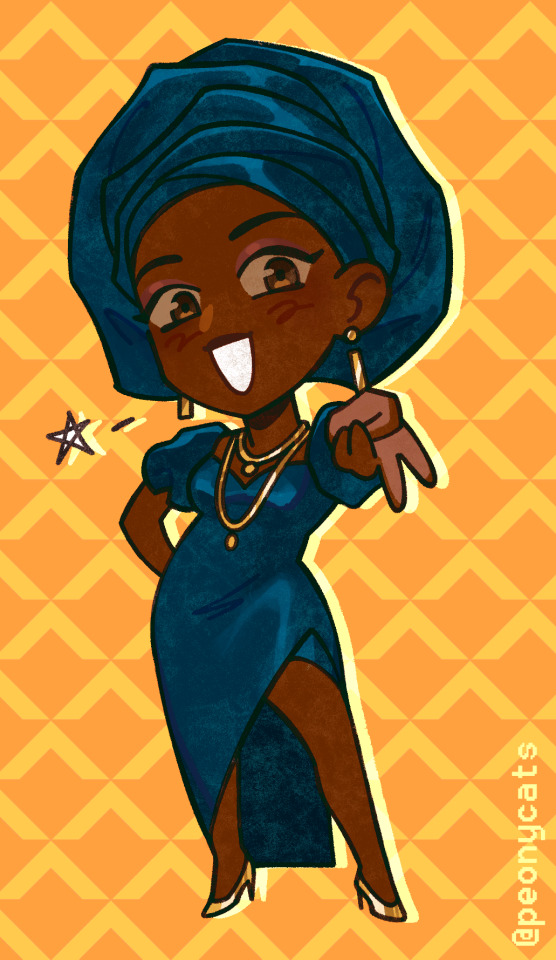
Wahhh it's no problem!! even if it has been years since ive drawn her so here's a miss nigeria (yorubaland) for your troubles!!
#one day ill get around to designing the other nation tans for nigeria#ask#hetalia#anonymous#hetalia ocs#hws nigeria#hws yorubaland#historically inaccurate hair is historically inaccurate#aph nigeria#aph yorubaland
240 notes
·
View notes
Text

The Yoruba religion (Yoruba: Ìṣẹ̀ṣe), West African Orisa (Òrìṣà), or Isese (Ìṣẹ̀ṣe), comprises the traditional religious and spiritual concepts and practice of the Yoruba people. Its homeland is in present-day Southwestern Nigeria, which comprises the majority of Oyo, Ogun, Osun, Ondo, Ekiti, Kwara and Lagos States, as well as parts of Kogi state and the adjoining parts of Benin and Togo, commonly known as Yorubaland (Yoruba: Ilẹ̀ Káàárọ̀-Oòjíire).
It shares some parallels with the Vodun practiced by the neighboring Fon and Ewe peoples to the west and with the religion of the Edo people to the east. Yoruba religion is the basis for a number of religions in the New World, notably Santería, Umbanda, Trinidad Orisha, and Candomblé.[1] Yoruba religious beliefs are part of Itàn (history), the total complex of songs, histories, stories, and other cultural concepts which make up the Yoruba society.

The Yoruba name for the Yoruba indigenous religion is Ìṣẹ̀ṣẹ, which also refers to the traditions and rituals that encompass Yorùbá culture. The term comes from a contraction of the words: Ìṣẹ̀, meaning "source/root origin" and ìṣe, meaning "practice/tradition" coming together to mean "The original tradition"/"The tradition of antiquity" as many of the practices, beliefs, traditions, and observances of the Yoruba originate from the religious worship of Olodumare and the veneration of the Orisa.

According to Kola Abimbola, the Yorubas have evolved a robust cosmology. Nigerian Professor for Traditional African religions, Jacob K. Olupona, summarizes that central for the Yoruba religion, and which all beings possess, is known as "Ase", which is "the empowered word that must come to pass," the "life force" and "energy" that regulates all movement and activity in the universe".Every thought and action of each person or being in Aiyé (the physical realm) interact with the Supreme force, all other living things, including the Earth itself, as well as with Orun (the otherworld), in which gods, spirits and ancestors exist. The Yoruba religion can be described as a complex form of polytheism, with a Supreme but distant creator force, encompassing the whole universe.
The anthropologist Robert Voeks described Yoruba religion as being animistic, noting that it was "firmly attached to place".
Each person living on earth attempts to achieve perfection and find their destiny in Orun-Rere (the spiritual realm of those who do good and beneficial things).
One's ori-inu (spiritual consciousness in the physical realm) must grow in order to consummate union with one's "Iponri" (Ori Orun, spiritual self).
Iwapẹlẹ (or well-balanced) meditative recitation and sincere veneration is sufficient to strengthen the ori-inu of most people. Well-balanced people, it is believed, are able to make positive use of the simplest form of connection between their Ori and the omnipotent Olu-Orun: an Àwúre (petition or prayer) for divine support.
In the Yoruba belief system, Olodumare has ase over all that is. Hence, it is considered supreme.
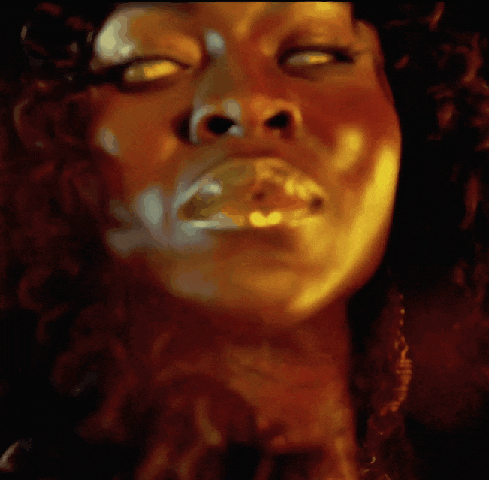
#african#afrakan#kemetic dreams#africans#brownskin#afrakans#brown skin#african culture#afrakan spirituality#orisa#Ìṣẹ̀ṣẹ#Ori Orun#Ori#oyo#ogun#lagos#nigeria#nigerian#nigerians#vodun#yoruba religion#shango#oludamare#Olodumare#Candomblé#Trinidad Orisha#Yorubaland#Ilẹ̀ Káàárọ̀-Oòjíire#santería#umbanda
20 notes
·
View notes
Quote
This resplendence of cloth and dress must, however, be underpinned by an armature of breeding, good manners and respect, else one becomes a ‘ garawa ofi fo ’ – an empty barrel, all noise and no use. The futility of beauty without meaning is often highlighted, and among the Yoruba, beauty has to be ‘mindful’, must be functional, however minimally. As the proverbs go, ‘ iwa l’ewa ’ (one’s character is one’s beauty), and ‘ iwa rere l’eso eniyan ’ (a good character is the best attire). Another common saying in Yorubaland is ‘ Aso la nri ki, ki a to ki eniyan ’ (it is the cloth we should greet before greeting the wearer). This saying illustrates that in some contexts it is the history and antecedents imbued in the cloth that one accords respect to – not just the person. The cloth/textile in these circumstances therefore evokes a multi-faceted, culturally significant and positively evaluated type of meaning that the beholder instantly experiences in a way that transcends literal sensibilities and comprehension.
Eni Bankole-Race - Aso iyi, aso eye: Resplendence and the Yoruba prestige textile aso-oke (2018)
12 notes
·
View notes
Text
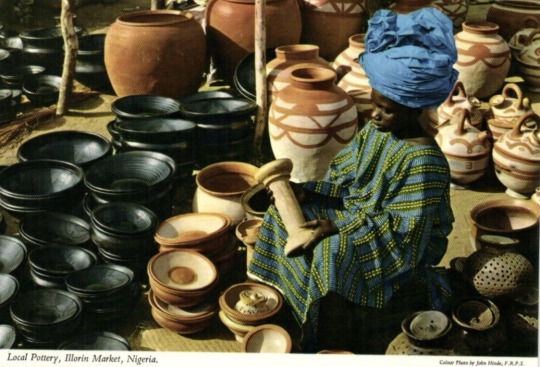
“Local Pottery, Illorin Market, Yorubaland. Photo by John Hinde.” c.unknown
7 notes
·
View notes
Text
ORISHAS IN THE IFA TRADITION
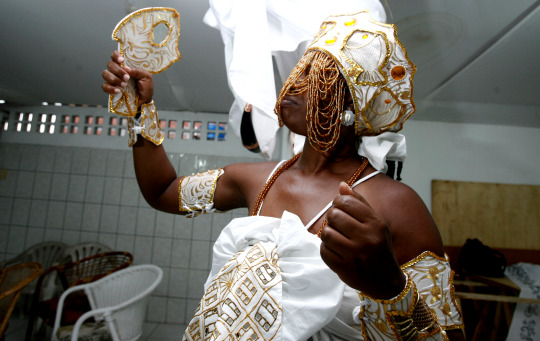
Orishas, also spelled Orisa, are natural forces or supernatural entities of the universe. These spirits are also referred to as deities or gods of the elements in the Ifa tradition of West Africa. They serve as conduits or intermediaries between humans and the Supreme Being (Olodumare) to benefit and help humans enjoy life.
There are innumerable Orishas in the Yoruba system and its derivatives. Some of the most popular Orishas are Orunmila, Eshu, Ogun, Obatala, Sango, Oya, and Yemoja. These spiritual forces embody elements of nature like the river, ocean, thunder, and wind. They are also linked to unique attributes such as wisdom, peace, love, health, and prosperity. Many people desire to connect with these beloved deities for these reasons and more.
COMMON ORISHA NAMES AND ATTRIBUTES
The following descriptions outline some of the major Orishas in the Ifa tradition and their attributes. Though keep in mind that these Orishas are revered in many traditions outside of Nigeria. And each society has its own beliefs surrounding the character and nature of these deities within their culture.
ORUNMILA
Orunmila is the Grand Priest of Ifa. He is the first Orisha to be reckoned with in the history of the Ifa tradition. Orunmila brought the wisdom of Olodumare (the Creator) to earth. The Yoruba people venerate Orunmila as a prophet of Ifa, the spirit of destiny, and Orisha of wisdom and knowledge.
ESHU
Eshu, also known as Esu or Elegba, is another prominent Orisha of the Ifa spiritual system. This deity understands all the languages spoken in the world and serves as a messenger between humans and the gods. As the harbinger of rewards and punishment, Eshu often instills a sense of fear or trepidation in some. He is known for his pranks, cruelty, unpredictability, and disruptions. Hence, he is often referred to as the ‘trickster god.’

Spirits of Africa Numerology Deck // Asanee 44
OGUN
Ogun is the elemental deity of iron, as he was a warrior during his sojourn on earth. He cleared the way for other Orishas to gain entrance to the planet using a metal ax and the help of a dog.
OSUN
Osun also spelled Oshun, is popularly referred to as the river goddess. Linked to purity, fruitfulness, fertility, calmness, and love, Oshun embraces the attributes of water. She also embodies human characteristics like jealousy, spite, and vanity.
OBATALA
Obatala is one of the most powerful and oldest Orisha in the Ifa religion. He is referred to as the king of white cloth as he is a tranquil judge. Greatly associated with forgiveness, honesty, peace, purity, and purpose, this Orisha is credited with the creation of humans.
SANGO
Sango or Shango governs the elements of thunder and lightning. He was once a king of the great Oyo Empire. And as such, Sango is one of the most revered Orishas in Yorubaland. The name Shango means to strike, and when annoyed, he brings thunder to burn the enemies or offenders of his children.
OYA
Oya is commonly known as the powerful goddess of storms. She comes before thunder in the form of lighting and is a favorite wife of Shango in some traditions. The name Oya means physical action or ‘she tore.’ Oya symbolically depicts the air that humans breathe as she can bring about life or death in the form of hurricanes, storms, or tornadoes.
YEMOJA
Yemoja is specifically a water spirit and is often depicted as a mermaid goddess. She is regarded as the mother of all the Orishas (deities) and the giver of life in the Ifa religion. She is believed to have originated from Tapa (Iganna) in the Oke Ogun area, Ogun State, Nigeria. Like Oshun, she is also known as a deity of fertility though her purview is the ocean rather than rivers. She protects sailors, dockworkers, fishers, swimmers, and others who travel by sea.
SUMMARY
As indicated, the Orishas in the Ifa tradition are innumerable. They are seen as the messengers of Olodumare, the Supreme Being. Each Orisha has its own distinct personality and set of characteristics that can be called upon to help guide an individual throughout life. Through offerings and rituals, individuals seek to honor and communicate with these powerful forces to receive guidance and direction.
As one grows in your knowledge and understanding of the tradition, one will encounter more and more Orishas. As such, one will grow and advance in knowledge about the character of these beings. And in turn, one can benefit from the many blessings and gifts of these sacred energies.
13 notes
·
View notes
Text
Who Are The Egbas?
Who Are The Egbas??The story of Abeokuta, the abode of the Egbas (and Owus), started with their liberation from the sovereignty of the Alaafin of Oyo Empire, to which the Egbas had belonged. The Liberation took place between 1775 and 1780, under the leadership of Lisabi, a resident of Igbehin who was born in Itoku. He organized an insurgent movement disguised under the name of Egbe Aaro Tradition…
View On WordPress
0 notes
Text

New Blog. The Influential West African Empire of Ife during Medieval Times
“One of the most considerable countries of the Sudan, and their sultan, one of the greatest sultans.” – Famous Historian of the Medieval World, Ibn Battuta
To find out more about the influential Ife Empire of medieval West Africa, click here: https://rb.gy/ov9h1u
#ife#yoruba#kingdom#empire#civilization#kings#queens#royal#westafrica#ancient#medieval#yorubaland#oyo#nigeria#benin#togo#sculpture#culture#creativity#spiritual#intellectual#artistic#songhai#zarma#mali#burkinafaso#greatbenin#kanembornu
1 note
·
View note
Text
Iyanu, Child of Wonder 🇳🇬
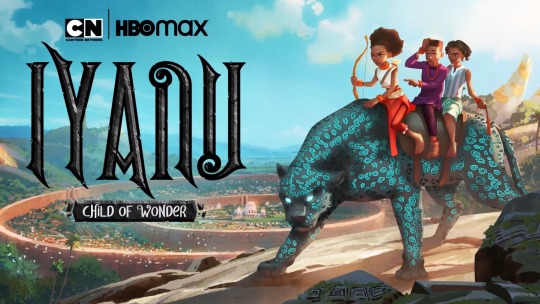
So, Cartoon Network & HBO Max just greenlit a new Nigerian show today!!
I’m really excited about this. I’m happy that the entertainment industry is starting to showcase & are developing more black centric stories with African mythology. It’s been needed for a LONG time.
“Iyanu: Child of Wonder, is a superhero tale set in the magical kingdom of Yorubaland, which draws from Nigerian culture & mythology. Iyanu, a teenage orphan who spends her days studying Yoruba history and ancient arts. One day, responding to danger, she unknowingly triggers her divine powers, that had not been seen since the Age of Wonders. With newly discovered superpowers, Iyanu joins forces with two other teenagers as they embark on a remarkable journey to discover the truth about the evil lurking in her homeland. Throughout her adventure, she’ll uncover the truth about her past, her parents, and her ultimate destiny to save the world. The series is created by Roye Okupe.”
I’m getting a vibe that it’s gonna be more kid-friendly, but will have serious storyline. I’m thinking something like Kipo & The Age of Wonderbeasts meets Avatar: The Last Airbender, but with African mythology & an entirely unique story. YESSSS I CAN’T WAIT!! Definitely gonna read the books now.
Link: “More Black Lead Fantasy Sci-Fi Shows & Movies”
Update: SERIES COMING IN 2024
#cinema starview#iyanu child of wonder#cartoon news#cartoon network#hbo max#nigerian mythology#black cartoons#african culture#afrofuturism#black fantasy#black scifi
95 notes
·
View notes
Text
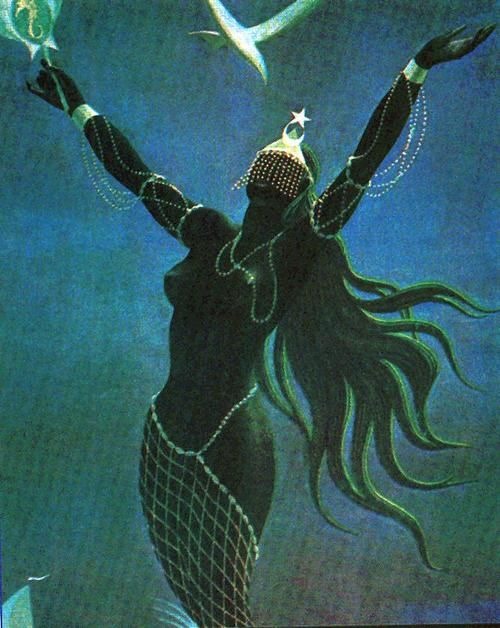
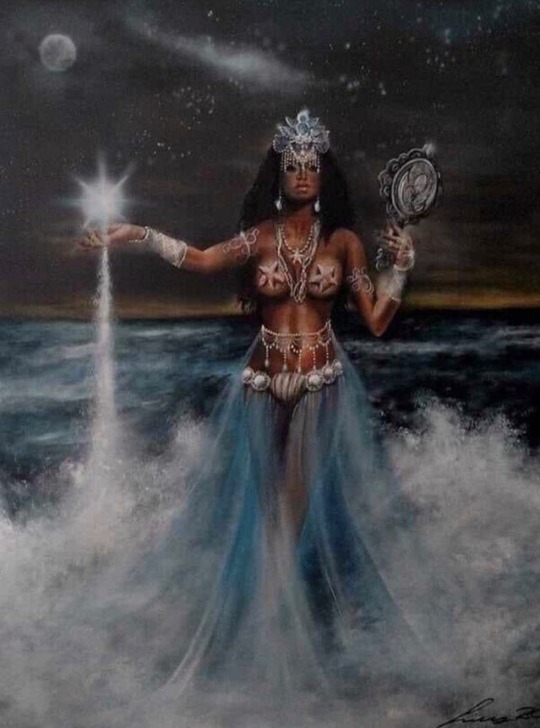
Yemonja, also spelled Yemoja or Yemaja, Yoruban deity celebrated as the giver of life and as the metaphysical mother of all orisha (deities) within the Yoruba spiritual pantheon.
Yemonja’s name is derived from the Yoruba words Yeye or Iya (“mother”), omo (“child/children”), and eja (“fish”) and thus literally means “Mother whose children are the fish.” According to the itans (stories) of the Yoruba, the orisha Yemonja was a primordial spiritual entity who was charged by Olofi (God; also known as Olodumare) to assist the orisha Obatala with the formation of humans in Olofi’s creation of Earth. Yemonja descended to Earth on a rope with 16 other orisha from Orun, the abode of Olofi, and traveled throughout the world engaging with other orisha in preparing the world for humankind. She is the orisha of the Ogun River, the largest river within the territory of Yorubaland, and is the counterpart of Olokun, who represents the unknowable bottom of the sea.
In Yorubaland, in Nigeria, each town maintained its own deity based on the myths of its founders. Tapa (Iganna) in the Oke Ogun area is where Yemonja originated. However, the worship of Yemonja began in Saki. Abeokuta, the capital of Ogun state, is the site of her principal shrine; she is especially celebrated in the Ibara quarter of that city.
Yemonja is frequently portrayed as the wife of various male personified orisha, such as Obatala, Okere, Orisha Oko, and Erinle. She is also said to be the mother of Ogun, Sango, Oya, Osun, Oba, Orisha Oko, Babaluaiye, and Osoosi. Many other itans describe her as having never given birth but as having raised many children, in particular Sango, Dada, and the Ibeji (twins). The itans also describe her as having long breasts as a result of the many children she nursed. Her sensitivity and embarrassment about her long breasts are consistent throughout the stories, and several tell of her turning herself into a river in response to insults about that by other orisha.
Although also attributed to the orisha Osun, stories refer to Yemonja as having been given (or as having stolen) the ability to interpret the oral scripture verses of the 16 Odu Ifa through the divination process called merindinlogun. It is said that Yemonja taught other orisha that alternative method of accessing the Odu through the “throwing” of cowrie shells.
Yemonja has been likened to amniotic fluid, because she too protects her children against a predatory world. She is temperamental and can be soothing or unpredictably violent. She is the orisha of fertility as well as of bodies of water and has under her protection dockworkers, boatwrights, fishers, sailors, swimmers, and others who work, live, or travel around water. Yemonja is the patron of the Gelede Society (“Society of Mothers”). She is associated with the fish-gill facial markings worn by the lyawo (initiate into the priesthood) and is said to have assisted Sango in ending the practice of twin infanticide in Nigeria. Her animal totems are the duck, the vulture, the snake, and the small snail; her sacrificial animals are the ram, the lamb, the duck, the rooster, the goat, the fish, and the pigeon. She is represented in her various shrines in Africa by sacred stones, known as ota, placed in river water in a calabash.
The statures of Yemonja and Olokun increased in prominence in the Americas and the Caribbean as the enslaved survivors of the Middle Passage propitiated Olokun to bless their lost kinsmen and petitioned Yemonja for an alleviation of their suffering. Yemonja’s omnipresence surrounding the islands and coastal areas of Cuba, Trinidad, and Brazil served as a continuous reminder of her ability to comfort and nurture hope. Attempts to annihilate African traditional cultural practices were resisted through the establishment of ethnic social organizations in Brazil and Cuba, as well as through the masquerading of the orisha with the saints of Roman Catholicism. In Cuba, Yemonja was creolized as Yemaya. Enslaved and free Africans who spoke Yoruba became identified as Lucumi, and their religious practice became known as Regla Lucumi. In the Brazilian religious movement Candomblé, she is known as Yemanja and has been celebrated since the 1930s on New Year’s Eve as followers of Candomblé and the Amerindian Umbanda systems construct miniature altars on the beaches and send small paper boats into the sea with inscribed prayer.
In Cuban, Brazilian, Trinidadian, Puerto Rican, and U.S. homes, Yemonja’s altars are often decorated with fountains and other symbols of the sea, such as fish nets, miniature boats, shells, live fish, peacock feathers, fans, and a blue or blue-and-white crockery vessel that houses her sacred stones in ocean or river water. The number 7 belongs to her, representing the seven seas; her devotees wear seven silver bracelets, and she is often seen wearing full skirts with seven blue-and-white layers. Her necklace, ileke, is made of crystal or crystal and blue beads, sometimes with red coral. She is summoned with a gourd rattle.

29 notes
·
View notes